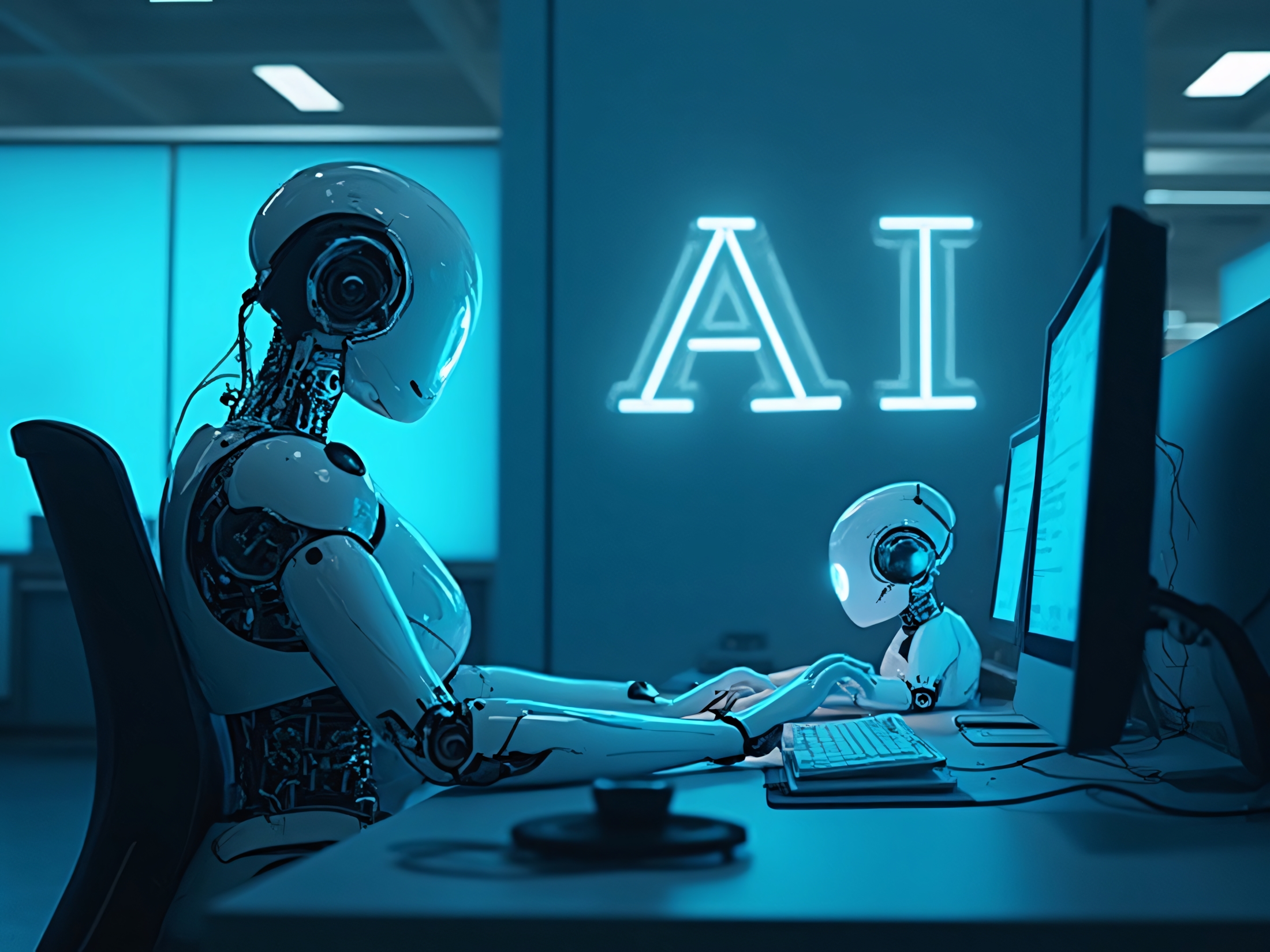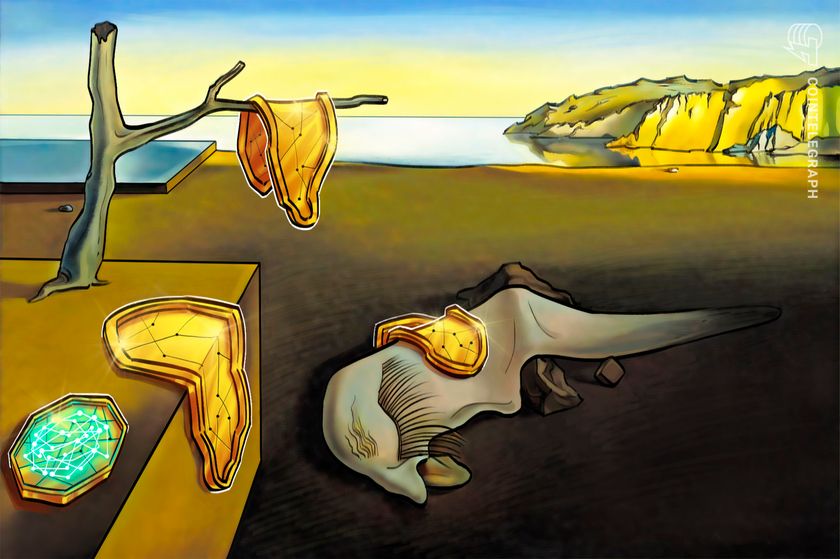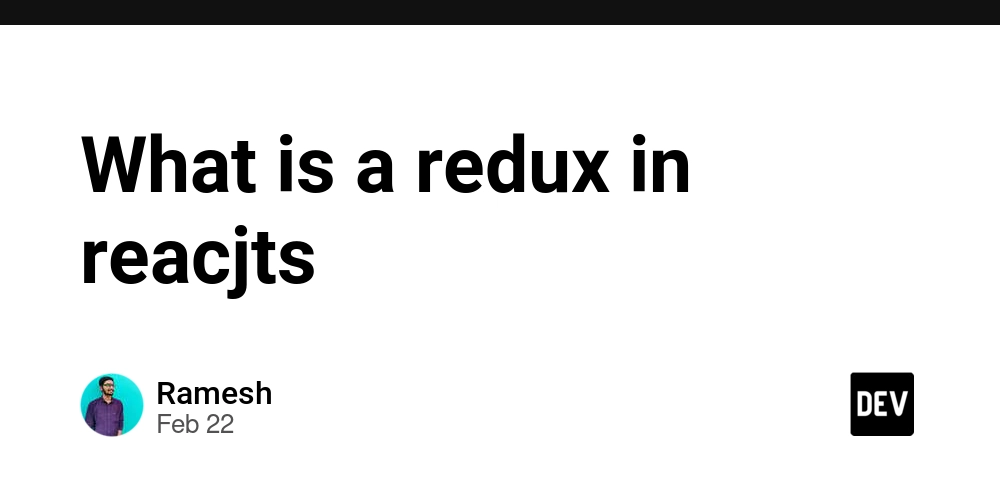Essential White Papers for Senior Software Engineers: Advanced Reading for Technical Leadership
As a senior software engineer, your role extends beyond writing code to architecting complex systems, making critical design decisions, and guiding technical strategy. The white papers on this list address advanced concepts that will help you navigate these responsibilities with confidence and wisdom. System Design at Scale "Designing for Scale and High Availability: Lessons from Google and eBay" by Randy Shoup (2010) Read the paper This paper explores architectural patterns for building highly available and scalable distributed systems, drawing from experiences at Google and eBay. It provides insights into effective partitioning strategies, data replication techniques, and service-oriented architectures. "Large-scale Incremental Processing Using Distributed Transactions and Notifications" by Peng and Dabek (2010) Read the paper Discusses Percolator, Google's system for incrementally processing large datasets, which replaced the batch-oriented MapReduce system for building Google's web search index. Valuable for understanding trade-offs between batch and incremental processing. Consistency Models and Distributed Databases "Consistency Tradeoffs in Modern Distributed Database System Design" by Abadi (2012) Read the paper Introduces the PACELC theorem, an extension of the CAP theorem that addresses additional tradeoffs between consistency and latency during normal operation. Essential for database architects. "Spanner: Google's Globally-Distributed Database" by Corbett et al. (2012) Read the paper Describes the design and implementation of Google's globally distributed database, with particular focus on how TrueTime (a global time synchronization service) enables external consistency guarantees. "Calvin: Fast Distributed Transactions for Partitioned Database Systems" by Thomson et al. (2012) Read the paper Presents a novel approach to distributed transaction processing that achieves high throughput without sacrificing strong consistency guarantees. Microservices and System Decomposition "Microservices - a definition of this new architectural term" by Lewis and Fowler (2014) Read the article While not a traditional academic paper, this influential article by Martin Fowler and James Lewis defines microservices architecture and contrasts it with monolithic approaches. "Out of the Tar Pit" by Moseley and Marks (2006) Read the paper A thought-provoking analysis of complexity in software systems, arguing that most complexity is accidental rather than essential, and proposing approaches to manage it through functional programming and formal methods. System Reliability and Resiliency "The Tail at Scale" by Dean and Barroso (2013) Read the paper Discusses the challenges of managing latency variability in large-scale distributed systems and provides techniques for mitigating these issues. Particularly valuable for engineers working on high-performance, low-latency services. "Chaos Engineering: Building Confidence in System Behavior through Experiments" by Basiri et al. (2016) Read the paper Describes Netflix's approach to proactive testing of system resilience through deliberate introduction of failures. Essential reading for building truly robust distributed systems. "Resilience Engineering: Learning to Embrace Failure" by Allspaw (2012) Read the article John Allspaw, former CTO of Etsy, discusses how to build resilient systems by focusing on failure as a learning opportunity rather than something to be avoided at all costs. Performance and Optimization "Latency Numbers Every Programmer Should Know" by Peter Norvig View the numbers While not a traditional paper, this reference provides essential context for performance engineering decisions by highlighting the relative costs of various operations. "Hints for Computer System Design" by Butler Lampson (1983) Read the paper Despite its age, this paper contains timeless wisdom about designing complex systems, with practical advice on handling interfaces, recovery, and performance. Programming Languages and Development "Recursive Functions of Symbolic Expressions and Their Computation by Machine" by John McCarthy (1960) Read the paper The original paper introducing Lisp, which influenced countless programming languages. Understanding the mathematical foundations of programming provides deeper insights into language design. "C++ Core Guidelines" by Bjarne Stroustrup and Herb Sutter Read the guidelines Not a traditional paper, but an essential resource for C++ developers, providing best practices and avoiding common pitfalls from the language's creator and other experts. AI and Machine Learning Systems "Hidden Technical Debt in Machine Learning Systems" by Sculley et al. (2015) Read the paper Discusses the unique challenges of maintaining production machine learning systems and how traditional software engineering best
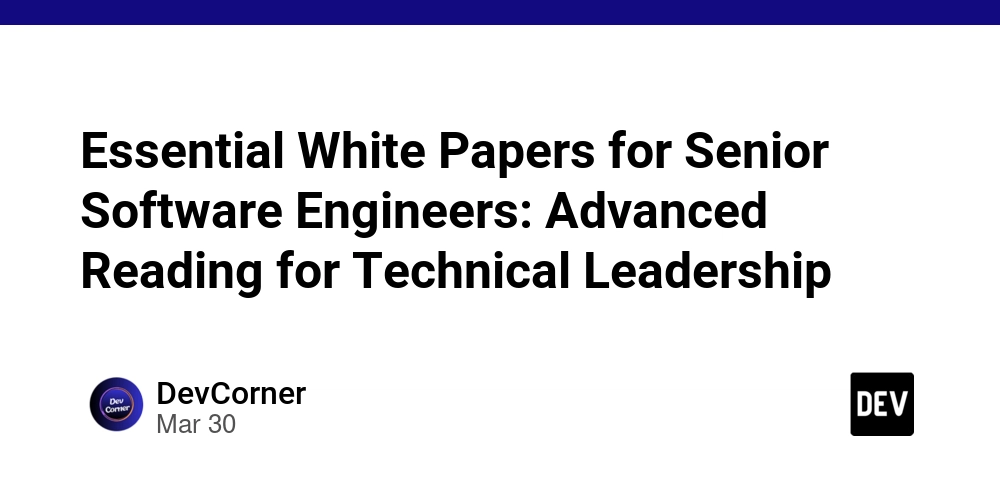
As a senior software engineer, your role extends beyond writing code to architecting complex systems, making critical design decisions, and guiding technical strategy. The white papers on this list address advanced concepts that will help you navigate these responsibilities with confidence and wisdom.
System Design at Scale
- "Designing for Scale and High Availability: Lessons from Google and eBay" by Randy Shoup (2010) Read the paper
This paper explores architectural patterns for building highly available and scalable distributed systems, drawing from experiences at Google and eBay. It provides insights into effective partitioning strategies, data replication techniques, and service-oriented architectures.
- "Large-scale Incremental Processing Using Distributed Transactions and Notifications" by Peng and Dabek (2010) Read the paper
Discusses Percolator, Google's system for incrementally processing large datasets, which replaced the batch-oriented MapReduce system for building Google's web search index. Valuable for understanding trade-offs between batch and incremental processing.
Consistency Models and Distributed Databases
- "Consistency Tradeoffs in Modern Distributed Database System Design" by Abadi (2012) Read the paper
Introduces the PACELC theorem, an extension of the CAP theorem that addresses additional tradeoffs between consistency and latency during normal operation. Essential for database architects.
- "Spanner: Google's Globally-Distributed Database" by Corbett et al. (2012) Read the paper
Describes the design and implementation of Google's globally distributed database, with particular focus on how TrueTime (a global time synchronization service) enables external consistency guarantees.
- "Calvin: Fast Distributed Transactions for Partitioned Database Systems" by Thomson et al. (2012) Read the paper
Presents a novel approach to distributed transaction processing that achieves high throughput without sacrificing strong consistency guarantees.
Microservices and System Decomposition
- "Microservices - a definition of this new architectural term" by Lewis and Fowler (2014) Read the article
While not a traditional academic paper, this influential article by Martin Fowler and James Lewis defines microservices architecture and contrasts it with monolithic approaches.
- "Out of the Tar Pit" by Moseley and Marks (2006) Read the paper
A thought-provoking analysis of complexity in software systems, arguing that most complexity is accidental rather than essential, and proposing approaches to manage it through functional programming and formal methods.
System Reliability and Resiliency
- "The Tail at Scale" by Dean and Barroso (2013) Read the paper
Discusses the challenges of managing latency variability in large-scale distributed systems and provides techniques for mitigating these issues. Particularly valuable for engineers working on high-performance, low-latency services.
- "Chaos Engineering: Building Confidence in System Behavior through Experiments" by Basiri et al. (2016) Read the paper
Describes Netflix's approach to proactive testing of system resilience through deliberate introduction of failures. Essential reading for building truly robust distributed systems.
-
"Resilience Engineering: Learning to Embrace Failure" by Allspaw (2012)
Read the articleJohn Allspaw, former CTO of Etsy, discusses how to build resilient systems by focusing on failure as a learning opportunity rather than something to be avoided at all costs.
Performance and Optimization
-
"Latency Numbers Every Programmer Should Know" by Peter Norvig
View the numbersWhile not a traditional paper, this reference provides essential context for performance engineering decisions by highlighting the relative costs of various operations.
-
"Hints for Computer System Design" by Butler Lampson (1983)
Read the paperDespite its age, this paper contains timeless wisdom about designing complex systems, with practical advice on handling interfaces, recovery, and performance.
Programming Languages and Development
-
"Recursive Functions of Symbolic Expressions and Their Computation by Machine" by John McCarthy (1960)
Read the paperThe original paper introducing Lisp, which influenced countless programming languages. Understanding the mathematical foundations of programming provides deeper insights into language design.
-
"C++ Core Guidelines" by Bjarne Stroustrup and Herb Sutter
Read the guidelinesNot a traditional paper, but an essential resource for C++ developers, providing best practices and avoiding common pitfalls from the language's creator and other experts.
AI and Machine Learning Systems
-
"Hidden Technical Debt in Machine Learning Systems" by Sculley et al. (2015)
Read the paperDiscusses the unique challenges of maintaining production machine learning systems and how traditional software engineering best practices need to be adapted.
-
"TFX: A TensorFlow-Based Production-Scale Machine Learning Platform" by Baylor et al. (2017)
Read the paperProvides insights into designing and implementing production-grade machine learning platforms, using Google's TensorFlow Extended as a case study.
Security and Privacy
-
"Position Paper: Progressive Multi-party Computation" by Evans et al. (2013)
Read the paperExplores techniques for performing computations on private data without revealing the data itself, increasingly relevant in an age of growing privacy concerns.
-
"Saltzer and Schroeder's Design Principles" (1975)
Read the paperThese design principles for building secure systems remain relevant decades after publication and should inform the thinking of any architect designing systems that handle sensitive data.
Software Development Methodologies
-
"What Do We Know about DevOps? An Overview of the Academic and Practitioner Literature" by Erich et al. (2014)
Read the paperA comprehensive overview of DevOps research and practice, providing insights into successful implementation patterns.
-
"Why Google Stores Billions of Lines of Code in a Single Repository" by Potvin and Levenberg (2016)
Read the paperExplores Google's monorepo approach to source control and the tools built to make it work at scale. Provides valuable insights for engineering organizations considering repository strategy.
Technical Leadership and Engineering Culture
-
"On Designing and Deploying Internet-Scale Services" by James Hamilton (2007)
Read the paperPresents lessons learned from operating large-scale online services, focusing on designing for failure and operational excellence.
-
"Simple Testing Can Prevent Most Critical Failures" by Yuan et al. (2014)
Read the paperAnalyzes hundreds of catastrophic failures in distributed systems and finds that most could have been prevented by simple testing of error-handling code. Includes practical recommendations.
Emerging Technologies
-
"Blockchain Technology Overview" by NIST (2018)
Read the paperA comprehensive and technically accurate overview of blockchain technology from the National Institute of Standards and Technology, useful for evaluating potential applications.
-
"Computing Machinery and Intelligence" by Alan Turing (1950)
Read the paperThe classic paper introducing the "Turing Test" and exploring the question of machine intelligence. Still relevant as AI capabilities advance rapidly.
How Senior Engineers Should Approach These Papers
As a senior engineer, reading these papers should go beyond merely understanding the concepts:
Analyze the trade-offs made in each system or approach and consider how they would apply to your specific context.
Extract design principles that transcend specific technologies and can guide your architectural decisions.
Consider implementation challenges that might not be obvious from the paper but would arise in real-world deployments.
Share and discuss these papers with your team to foster a culture of learning and intellectual curiosity.
Apply the insights in your architectural decision-making, explicitly referencing relevant papers when documenting important design choices.
Conclusion
The journey to becoming a truly exceptional senior engineer involves continuous learning and a deep understanding of both theoretical foundations and practical implementation challenges. These papers represent some of the most influential thinking in our field and provide valuable insights for engineers tackling complex architectural problems.
Remember that reading these papers is not about academic knowledge for its own sake, but about building a robust mental model that enables you to design better systems, make better technical decisions, and provide better guidance to your teams.







































































































































































![[The AI Show Episode 143]: ChatGPT Revenue Surge, New AGI Timelines, Amazon’s AI Agent, Claude for Education, Model Context Protocol & LLMs Pass the Turing Test](https://www.marketingaiinstitute.com/hubfs/ep%20143%20cover.png)




















































































































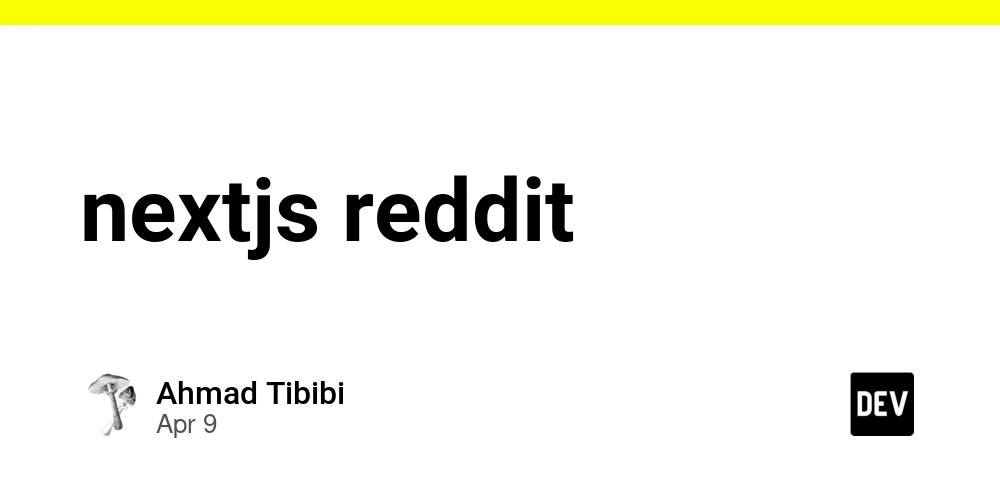
















![From drop-out to software architect with Jason Lengstorf [Podcast #167]](https://cdn.hashnode.com/res/hashnode/image/upload/v1743796461357/f3d19cd7-e6f5-4d7c-8bfc-eb974bc8da68.png?#)










































































































.jpg?#)





























_ArtemisDiana_Alamy.jpg?#)














































































-xl.jpg)













![Yes, the Gemini icon is now bigger and brighter on Android [U]](https://i0.wp.com/9to5google.com/wp-content/uploads/sites/4/2025/02/Gemini-on-Galaxy-S25.jpg?resize=1200%2C628&quality=82&strip=all&ssl=1)












![Apple Rushes Five Planes of iPhones to US Ahead of New Tariffs [Report]](https://www.iclarified.com/images/news/96967/96967/96967-640.jpg)
![Apple Vision Pro 2 Allegedly in Production Ahead of 2025 Launch [Rumor]](https://www.iclarified.com/images/news/96965/96965/96965-640.jpg)





















